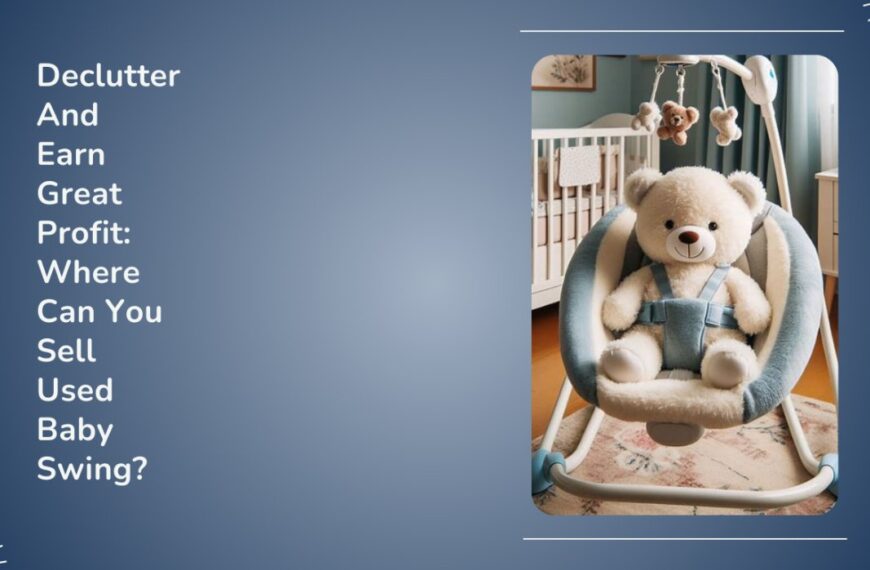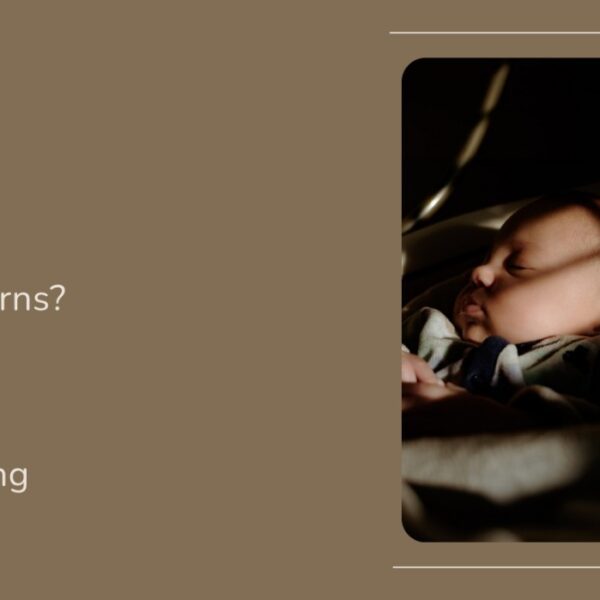Are swings bad for babies’ hips? It’s a common question that parents often think about and look for its answer.
According to International Hip Dysplasia Institute, 1 in 10 newborns has hip instability.
The good news is 90% of these cases recover naturally.
However, it makes it crucial to understand the potential impact of swings on babies’ hip development.
This way, you can ensure you’re not unknowingly doing anything that could harm your little one’s hips.
In this blog post, we’ll thoroughly explore the topic and cover the following key areas:
- Understanding Hip Development Process in Babies
- Common Hip Problems in Babies
- Are swings bad for babies hips?
- Safety Guidelines for Using Swings And much more
So, let’s dive in and find out the real answer to “Are swings bad for babies hips?”
People Also Read: Best Baby Swings for Small Spaces
Table of Contents
4 Stages of Hip Development in Babies
Before we dive into how swings can affect your baby’s hips, it’s crucial to understand the baby’s hip development process.
This knowledge will help you determine what’s good for the baby’s hips and what’s not.
Baby’s Hip has a hip joint, basically a ball-and-socket joint that connects the thigh bone to the pelvis.
The hip joint allows the leg to move in different directions and supports the body’s weight.
Your baby’s hip development goes through four stages from birth to 18 months.
Let’s take a look at the four stages of baby hip development:
Stage 1 – The Cartilage Stage
This is the first stage your baby’s hip joint has when he is inside your womb and when he is born.
It is mostly made of flexible soft cartilage, which can change shape easily.
It protects the baby from getting hurt during birth. It makes their hips look wide and open.
Stage 2 – The Bone Formation Stage
This is the second stage your baby’s hip joint goes through when he is 3 to 6 months old.
It is when the cartilage starts to turn into hard bone.
In this stage, their hips become more stable and strong. It also makes their hips look narrower and closer together.
You should avoid putting your baby in positions that can squeeze or twist their hips, such as tight swaddling, narrow car seats, or carriers that do not support their legs.
Stage 3 – The Growth Spurt Stage
This is the third stage your baby’s hip joint experiences when he is 6 to 12 months old.
In this phase, their hips grow rapidly and need more space and movement.
This growth makes their hips more flexible and mobile. It also makes their hips look more rounded and smooth.
You should encourage your baby to crawl, stand, and walk as much as possible to help their hips develop properly.
You should also massage their hips gently to stimulate blood flow and relax their muscles.
Stage 4 – The Maturation Stage
Your baby’s hip joint reaches the final stage when they are 12 to 18 months old.
It is when their hips become fully mature and more stable and balanced.
It also makes their hips look more like an adult’s hips.
You should continue to support your baby’s hip health by providing them with a healthy diet, regular exercise, and proper footwear.
As you can see, your baby’s hip development is a complex and amazing process that requires your love and care.
As a parent, you should also know what problems can come during this process.
Let’s take a look at that.
Common Hip Problems in Newborns
Parents should be aware of these hip problems as it can help them spot any symptoms, get the right treatment, and understand how baby swings can worsen these problems.
These are the most common hip problems in babies:
Hip Instability
As we mentioned earlier, it is relatively common for newborns to have some degree of hip instability.
Hip Instability means the hip joint may feel loose or move more than it should.
Don’t panic; this instability often resolves naturally as the baby grows and the hip joint develops.
Hip Dysplasia
Hip dysplasia is a condition where the baby’s hip joint is not properly formed.
The ball and socket of the hip joint may not fit together correctly, leading to an unstable or dislocated hip.
Hip dysplasia can range from mild to severe and sometimes needs treatment, such as using a harness or brace to help the hip joint develop properly.
Developmental Dislocation of the Hip (DDH)
DDH occurs when the hip joint is dislocated or partially dislocated.
It can occur at birth or develop within the first few months of life.
DDH may be detected through a physical examination or imaging tests and usually requires treatment to help realign the hip joint.
Perinatal Hip Injury
During birth, some newborns may experience hip injuries, such as a stretched or strained hip joint.
These injuries are usually temporary and heal naturally with time and proper care.
Parents should be aware of these common hip problems and consult healthcare professionals if they notice any signs or have concerns about their newborn’s hip health.
Early detection and appropriate treatment can help ensure proper hip development and prevent long-term complications.
The Truth behind “Are Swings Bad for Babies Hips”
Now that you know what hip problems in infants are and how they are diagnosed, you may wonder how swings can cause or worsen them.
We’ll see it for both baby swings and park swings.
What’s Wrong with the Baby Swings?
As mentioned earlier, Babies are born with soft cartilage in their hips that gradually turns into hard bone over the first few years of life.
The ball and socket joint needs to fit together snugly for normal development.
Several factors influence this process, like genetics, hormones, muscle tone, and movement.
Baby swings can interfere with this process by keeping the baby’s hips and legs in a fixed or unnatural position for too long.
This lack of movement can prevent the ball and socket from having enough contact and stimulation to grow normally.
Overuse of swing can also cause the ligaments that hold the joint together to become stretched or loose, making the joint unstable or prone to injury.
What’s Wrong with the Park Swings?
The main issue with swings is that they do not provide the hip support that your baby needs.
When your baby is in a swing, his weight is supported by his hips, the crotch, and under the arms.
This position pushes the baby forward instead of keeping him upright.
Staying in this position for an extended time can put pressure on the hip joint and prevent it from developing properly.
It’s important to use the swing in moderation and make sure their hips are supported properly.
Otherwise, it could lead to hip issues like hip dysplasia or unstable hip joints.
How Can We Minimize the Effects?
Don’t worry! I know your little one loves his swing, and you don’t want to lose it.
Swings can be safe if you use them for short intervals and follow all the safety guidelines.
It’s all about finding the right balance between swing and other activities.
Using the swing for short periods and giving babies breaks to move around freely will minimize the negative effects of the swing.
Let them play on the floor, crawl, and explore different positions.
That way, their hips can develop in a healthy way while still enjoying some swing time.
And remember, if you notice any signs of discomfort or have concerns, talk to your doctor to ensure your baby’s hips stay healthy.
Safety Guidelines for Using Baby Swings
Now, you may wonder how to use swing in a way that doesn’t affect your little one’s hip.
The good news is there are some safety guidelines given by The American Academy of Pediatrics (AAP) to ensure the baby’s safety in the swing:
Read the Manufacturer’s Instructions
Read the manufacturer’s instructions and guidelines before using the baby swing and follow them strictly.
These instructions will provide important information about weight limits, age limits, and how to use the swing correctly.
Use Age-Appropriate Swings
Make sure the swing is suitable for your baby’s age and size.
Using a swing designed specifically for your baby’s developmental stage ensures proper support for their hips and reduces the risk of hip problems.
Secure Your Baby Properly
Always use the safety harness or straps provided with the swing.
Fasten them snugly and correctly to keep your baby secure and prevent them from slipping or falling out.
Check the harness before each use to see if it is functioning perfectly.
Place the Swing on a Flat Surface
Place the swing on a stable surface to prevent tipping over or accidents.
Avoid placing it on elevated surfaces, as these can be dangerous if your baby falls.
Supervise Your Baby
Never leave your baby unattended while they are in the swing.
Keeping a close eye on them ensures their safety and allows you to respond quickly if any issues arise.
Limit Swing Time:
Limit the amount of time your baby spends in the swing.
Extended periods of swinging can strain their developing hips.
Aim for shorter sessions and provide plenty of time for free movement and floor play.
Don’t let your baby use the swing for more than 30 minutes at a time.
Inspect for Safety
Regularly inspect the swing for any signs of loose parts or malfunctioning mechanisms.
If you notice any problems, discontinue use and contact the manufacturer for assistance.
Final Words
Baby swings don’t cause problems for your little one’s hips if you use them for a short time and follow all the safety guidelines.
If swings are used for a long time, it can cause or worsen hip instability, Hip Dysplasia, or any other hip problem in newborns.
The trick is to find the perfect balance between swing usage and other healthy activities required for your Baby’s Hip Development.
However, if you still have concerns regarding the swing and your baby’s hip health, consult your pediatrician and take his advice seriously.
We hope you found this blog post helpful in answering the critical question of “Are swings bad for babies hips” and exploring other aspects of this topic.
Thank you for reading, and happy parenting!
Related Blog Posts





